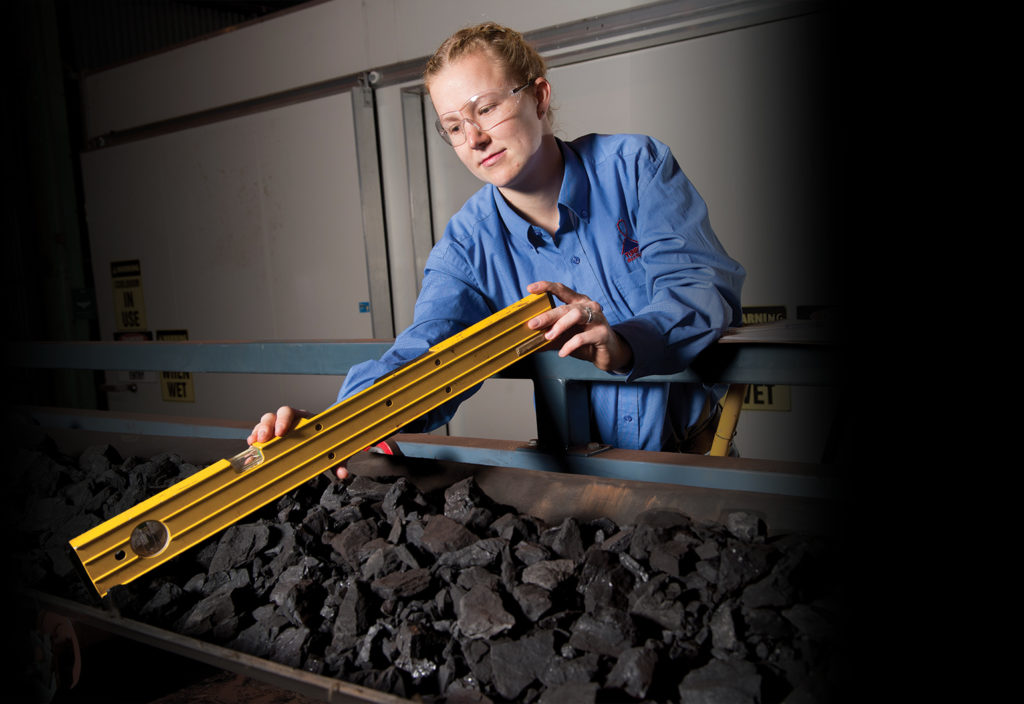Bulk handling gains some precision thanks to Jayne O’Shea’s award-winning insights.
Work experience can help a student decide for or against a career path. For Dr Jayne O’Shea, a week alongside health professionals during high school showed her a different professional match might be better for her.
Subsequent work experience, this time at a local mine, made much more sense to O’Shea, who is from Mudgee, New South Wales.
Problem-solving skills and mathematics applied to something practical? It was perfect. O’Shea has been fascinated by movement and industrial problems since.
“It wasn’t the working in the mine so much as the work that they were actually doing,” she told create.
“It was logical, straightforward — dealing with numbers, not with patients. That was appealing to me.”

O’Shea recalibrated her career course and earned a mechanical engineering scholarship at the University of Newcastle’s TUNRA Bulk Solids centre, a hotspot for industry-focused excellence in the evolving field of materials handling.
This year, her work earned her the A.W. Roberts Award at the Australian Bulk Handling Awards, which she describes as both surprising and humbling.
Now a University of Newcastle Research Associate, she also co-supervises two PhD students.
Her undergraduate work began in the TUNRA labs, testing the flow properties of materials such as iron ore and coal, before moving on to programming work and discrete element modelling, and then designing a test rig in her final year.
“I worked in the labs there in all the university breaks over the Christmases,” O’Shea said.
The test rig got built during her PhD, an ARC Linkage project with Laing O’Rourke, Conveyor Dynamics and Veyance Technologies (now ContiTech).
The project involved designing a numerical model using dielectric relaxation properties to calculate the rolling resistance of different compounds. Rolling resistance, said O’Shea, is the largest component of energy consumption for overland conveyors, and the work was a chance to tackle a significant industrial problem.
“My work was looking at how to test a small part of the conveyor belt to try and predict energy consumption, and how the different compounds will perform for an overland conveyor as accurately as possible — which is very difficult,” she recalled.
“Typically, at the moment, you would use a dynamic mechanical analysis machine, where you get a lot of inherent error just from testing mechanically. So I was looking to see if we could use the electrical equivalent to test the same component as an analogue, and then work out how to compare the compounds that way to get more accuracy.”
The work now continues between other projects, testing and building out the database. O’Shea completed her PhD in 2015. Current projects include one with PhD student Caroline de Oliviera examining the wear behaviour of sacrificial chute liners.
“As part of that project we’re trying to optimise testing and wear prediction procedures for liners. It’s about finding the best liner for the application,” O’Shea said.
She believes the bulk materials handling industry has grown in professionalism in recent years, become less and less about manual handling, and seen an increase in the importance of smart engineering.
“People are starting to recognise that you don’t just draw a line on a detailed drawing and that’s it,” she said, adding that things like understanding and optimising chutes and belts are ways maintenance can be better timed.
“There’s been a lot of work done over the past 40 years by a lot of other engineers to cement it or make it become more and more recognised as an engineering profession.”
